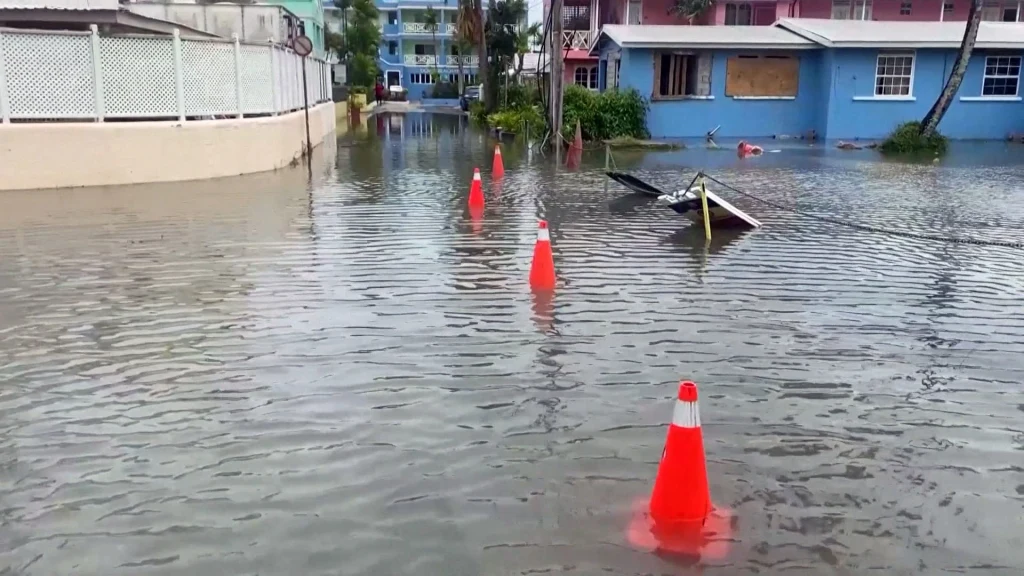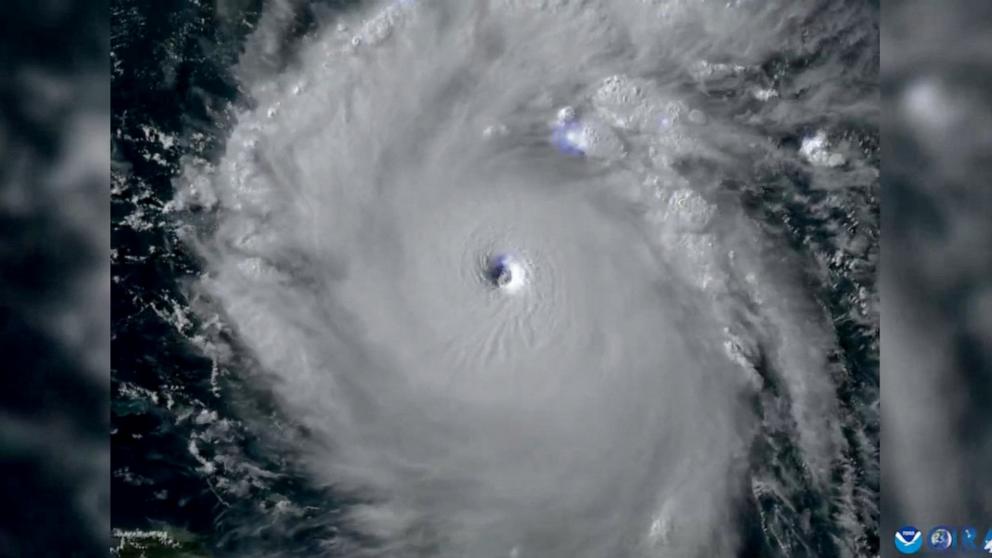Hurricane Beryl, a powerful Category 4 storm, continues its westward path across the Caribbean Sea, threatening Jamaica and other islands with life-threatening winds and storm surge. The hurricane has already claimed at least six lives in Grenada, Venezuela, and St. Vincent and the Grenadines, leaving a trail of destruction in its wake.
As of Tuesday evening, Beryl was located approximately 125 miles southeast of the Dominican Republic, moving at a speed of 22 mph. The National Hurricane Center reported that the storm’s maximum sustained winds reached a record-breaking 165 mph, making it the strongest July hurricane ever recorded, surpassing Hurricane Emily from 2015.

The storm’s impact has been devastating in the affected areas. Grenada’s Prime Minister Dickon Mitchell described the situation as “grim,” with widespread destruction of homes and buildings, downed power lines, and impassable roads. In Carriacou Island, two people lost their lives, while another person died when a tree fell on a home in River Road.
Jamaica, now under a hurricane warning, is bracing for Beryl’s approach. Prime Minister Andrew Holness has urged citizens to prepare and seek higher ground, warning that emergency services may not be able to operate during the peak of hurricane conditions. The island could face storm surges of 5 to 8 feet above normal tide levels and up to 12 inches of rain.
Other Caribbean nations are also on high alert. The Cayman Islands are under a hurricane warning, with potential storm surges of 2 to 4 feet. Tropical storm warnings are in place for southern Hispaniola, while Haiti’s south coast is under a hurricane watch.

The NHC predicts that Beryl will maintain its major hurricane status as it passes near Jamaica on Wednesday and the Cayman Islands on Thursday, before reaching the Yucatán Peninsula. While some weakening is expected, Beryl is forecast to remain a hurricane as it moves through the northwestern Caribbean.
This unprecedented storm has set several records, including being the first Category 4 or higher hurricane to appear in June, the earliest Category 4 storm of the Atlantic hurricane season, and the strongest hurricane to pass through the Windward Islands.
As Beryl continues its path, authorities across the region are mobilizing emergency responses and urging residents to take necessary precautions. The storm’s effects may even reach as far as the continental United States, with potential minor coastal flooding in southeast Texas or southwest Louisiana.
The coming days will be crucial as Caribbean nations and meteorological services closely monitor Hurricane Beryl’s progress and work to mitigate its potentially catastrophic impact on lives and infrastructure in the region.



